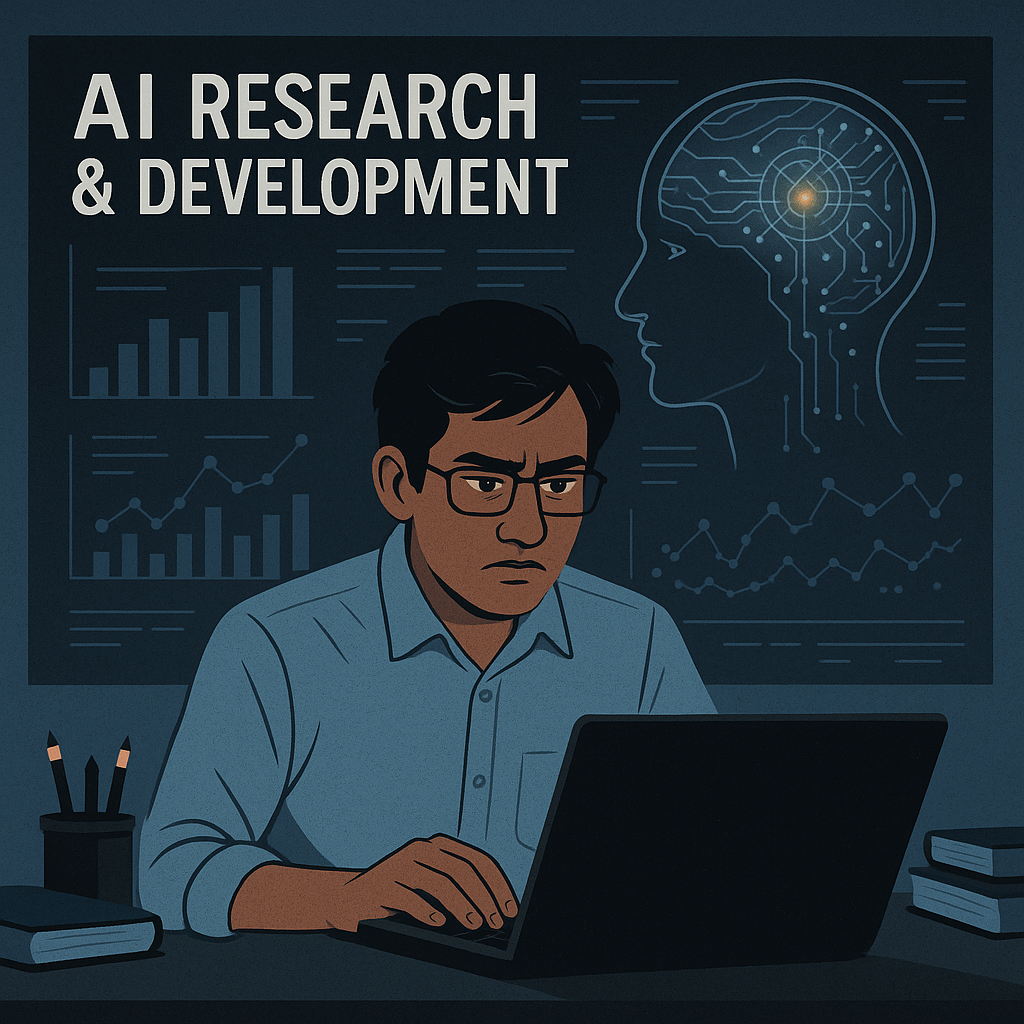
India is one of the fastest-growing economies in the world and a country that has produced top tech talent for decades. Today, Artificial Intelligence (AI) is becoming the most important technology in the global race for progress. India also dreams of becoming a global leader in AI. But the journey is not going as smoothly as expected. One of the biggest reasons is the lack of innovation and research and development (R&D) spending.
AI has the power to change industries, boost productivity, and bring economic growth. However, for a country to lead in AI, it must invest heavily in original research, develop its own models, and support a strong ecosystem of startups and talent. Sadly, India is far behind in this area.
Funding Is Not Enough
India made headlines recently when some startups received large amounts of money. For example, Sarvam AI raised $41 million in Series A funding, which was led by big companies like Lightspeed and Peak XV. Another startup, Krutrim, raised $50 million and became India’s first AI unicorn. These are positive signs and show that Indian investors are beginning to support AI.
However, if we compare this with global trends, it is clear that India is still far behind. In 2023, AI startups in the United States raised over $66 billion. In the United Kingdom, the number was $4.5 billion. Even countries like Canada and Israel, which are smaller than India, attracted more AI investments. India, on the other hand, received only $1.1 billion in AI funding. This is just 1.6 percent of what the US received.
This low funding means Indian startups have less money to invest in research, talent, and innovation. It becomes harder for them to build advanced AI models or compete with large global companies like Google, OpenAI, or Meta.
Patents and Research Show the Gap
Innovation can be measured through patents and research output. According to the World Intellectual Property Organization (WIPO), India filed only about 200 patents in AI in 2022. In comparison, China filed over 29,000, the US filed 10,000, Japan filed 3,700, and South Korea filed over 2,000. Even the European Union filed more than 1,000 patents.
This gap clearly shows how far behind India is in original AI research. Patents are important because they show whether a country is creating something new. Without new inventions, a country can only use the technology made by others.
One reason for this is the lack of investment in R&D. Most Indian companies and even the government do not spend much money on basic research. Instead, the focus is more on using existing technologies for services. This may help in the short term but will not help India become a global AI leader.
Not Enough Trained Talent in Deep Tech
India has some of the best software engineers in the world. Indian IT services are famous globally. But AI needs a different kind of talent. It requires researchers who can build new models, understand mathematics deeply, and solve scientific problems. These skills are not easily found in regular software jobs.
Many students in India still do not get proper training in AI and deep tech at the school or college level. Most colleges focus on coding and not on original thinking or research. There is also a gap between academic research and industry needs.
Countries like the US and China have built strong connections between universities, government labs, and private companies. This has helped them push the boundaries of AI research. India needs to do the same.
Lack of Infrastructure and Collaboration
Developing AI models requires a lot of computing power. This is known as compute infrastructure. GPUs and high-end servers are expensive and often not available in many Indian institutions. Without these tools, researchers cannot train large AI models.
Also, Indian startups often work in isolation. They do not have enough collaboration with universities or each other. Countries like Israel have built AI clusters where researchers, startups, and government bodies work together. India lacks this kind of ecosystem.
The Indian government has announced several schemes like the IndiaAI initiative, but their implementation is still slow. There are also no clear laws or ethical guidelines for AI, which creates uncertainty for new businesses.
What India Needs to Do
If India wants to achieve its AI dream, it must take bold steps. First, the government should increase public funding in AI research and encourage private companies to do the same. A clear R&D roadmap should be created that supports innovation and long-term development.
Second, India needs to improve its education system to train more researchers in deep tech fields. This includes creating more PhD programs, offering better scholarships, and linking academic research with startups.
Third, the government should help build shared infrastructure like AI compute labs and data centers. This will allow smaller startups and universities to access the tools needed for innovation.
Lastly, India must build a strong AI policy that includes ethical rules, data privacy, and support for open-source models. Only then can India hope to lead in AI and not just follow others.
Finally, India’s AI dream is real but facing serious roadblocks. Without strong investment in research and innovation, India will remain a consumer of AI and not a creator. The future depends on whether we choose to spend, support, and believe in our own power to invent.



.jpeg)


.jpeg)




.jpeg)

.jpeg)


.jpeg)


.jpeg)

.jpeg)